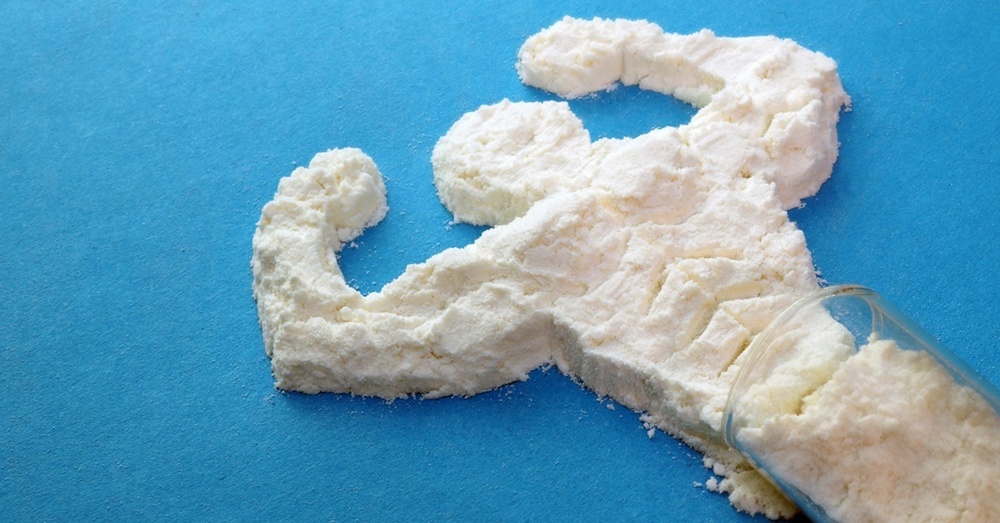Food
What does creatine taste like?

Creatine is a widely used supplement among athletes, bodybuilders, and fitness enthusiasts due to its proven benefits in enhancing muscle strength and performance. However, before incorporating it into their regimen, many individuals are curious about what creatine tastes like.
What is creatine?
Creatine is a naturally occurring compound found in small amounts in certain foods and synthesized by the human body, primarily in the liver, kidneys, and pancreas. It is stored mainly in the muscles and used as a quick source of energy during high-intensity activities. Creatine supplements are popular for their ability to improve exercise performance, increase muscle mass, and enhance recovery.
Forms of Creatine
There are several forms of creatine available on the market, each with varying solubility and potential taste differences:
- Creatine Monohydrate: The most common and widely studied form of creatine, known for its effectiveness and affordability.
- Creatine Ethyl Ester: A form of creatine claimed to have better absorption but with mixed scientific support.
- Creatine Hydrochloride (HCL): Known for its higher solubility, which may impact its taste and ease of mixing.
- Buffered Creatine: Designed to be less acidic, potentially reducing stomach discomfort.
- Micronized Creatine: Finer particles that dissolve more easily in liquids, possibly affecting taste and texture.
What does Creatine taste like?
Pure creatine monohydrate, the most commonly used form, is typically described as having a slightly bitter and chalky taste. It is often flavorless but can leave a gritty texture in the mouth, especially if not fully dissolved. Because of its neutral taste, it can easily be mixed with other beverages without significantly altering their flavor.
Flavored Creatine supplements
To improve the taste experience, many manufacturers offer flavored creatine supplements. These are often mixed with sweeteners and natural or artificial flavors, making them more palatable. Common flavors include fruit punch, lemonade, and berry, which can mask the inherent bitterness of pure creatine.
Creatine blends
Creatine blends often combine creatine with other performance-enhancing ingredients, such as amino acids, caffeine, or electrolytes. These blends usually come in various flavors to enhance the overall taste, making them more enjoyable to consume.
Improving the taste of Creatine
For those who prefer pure creatine or have an unflavored supplement, there are several ways to improve its taste:
Mix with juice
Mixing creatine with fruit juice, such as orange or grape juice, can mask its slight bitterness and chalky texture. The natural sugars in juice can also help with creatine absorption.
Add to smoothies
Incorporating creatine into a smoothie with fruits, yogurt, and other ingredients can significantly improve its taste and texture. This method not only masks the flavor but also adds nutritional benefits.
Combine with flavored protein shakes
Adding creatine to a flavored protein shake is another effective way to improve its taste. The strong flavors of chocolate, vanilla, or strawberry protein powders can easily overpower the subtle taste of creatine.
Use flavored water
Mixing creatine with flavored water or a low-calorie sports drink can enhance its taste without adding many extra calories. This option is convenient and quick, especially for those on the go.
Try flavored Creatine supplements
Opting for flavored creatine supplements is a straightforward solution for those who want a better taste without additional mixing efforts. These products are specifically designed to be more palatable and enjoyable.
Tips for consuming Creatine
The typical dosage for creatine monohydrate is 3-5 grams per day. During the initial loading phase, some may take 20 grams per day, divided into 4 doses, to saturate the muscles quickly. Always follow the dosage recommendations on the supplement label or consult with a healthcare provider.
Hydration
Creatine can cause water retention in the muscles, so it’s important to stay well-hydrated. Drink plenty of water throughout the day to support optimal creatine function and prevent dehydration.
Consistency
For best results, take creatine consistently. Incorporate it into your daily routine, whether it’s in the morning, before or after workouts, or at another convenient time. Consistency helps maintain creatine levels in the muscles.
Storage
Store creatine in a cool, dry place to maintain its potency and prevent clumping. Proper storage ensures that the supplement remains effective and easy to mix.
Potential side effects
Some individuals may experience stomach cramps, bloating, or diarrhea when taking creatine. Starting with a lower dose and gradually increasing it can help mitigate these side effects.
Weight gain
Creatine supplementation can lead to an increase in body weight due to water retention in the muscles. This is typically beneficial for those looking to gain muscle mass, but it may be a concern for others.
Kidney concerns
While creatine is generally safe for healthy individuals, those with pre-existing kidney conditions should consult with a healthcare provider before starting supplementation. There is limited evidence suggesting that creatine might affect kidney function in susceptible individuals. Creatine, while beneficial for enhancing athletic performance, should be consumed with consideration for overall health and proper hydration.
What does Creatine taste like?
The answer to “What does creatine taste like” largely depends on the form and preparation method. Pure creatine monohydrate has a slightly bitter and chalky taste, but it is generally considered neutral and easily masked by other flavors. Flavored creatine supplements and creative mixing methods can significantly improve the taste, making it more enjoyable to consume.
By understanding the different forms of creatine and how to enhance its flavor, individuals can seamlessly incorporate this beneficial supplement into their fitness routines. Whether mixed with juice, added to a smoothie, or blended with a protein shake, creatine can be consumed in a way that suits personal taste preferences while providing its well-documented performance benefits. Also, here are some similar articles that you might find useful:
